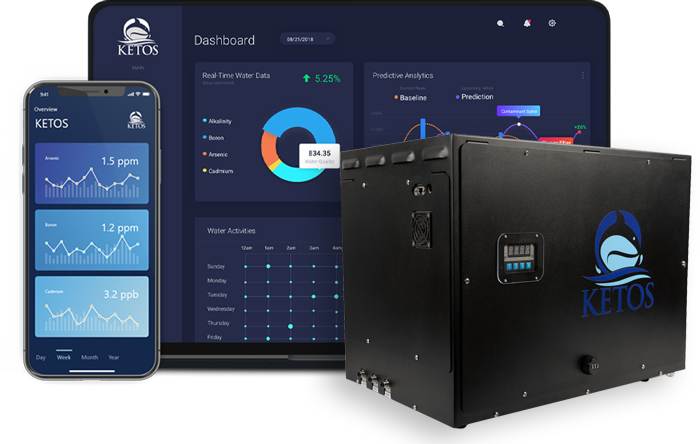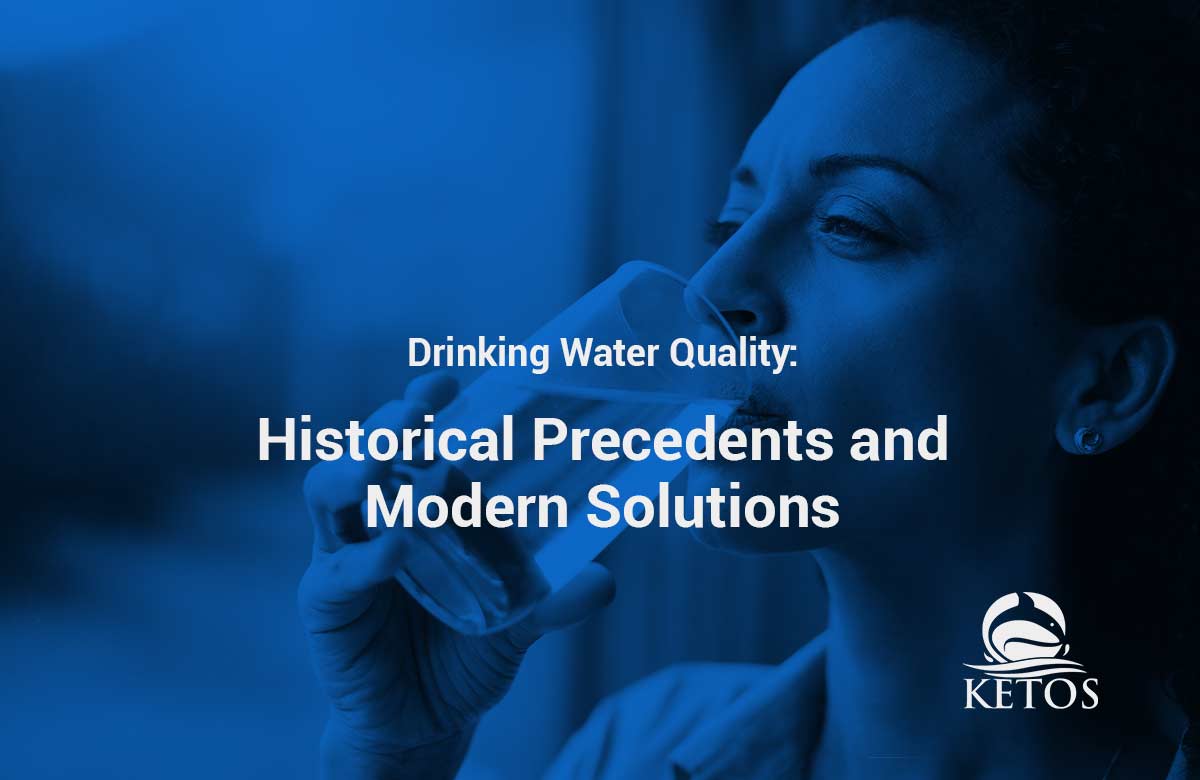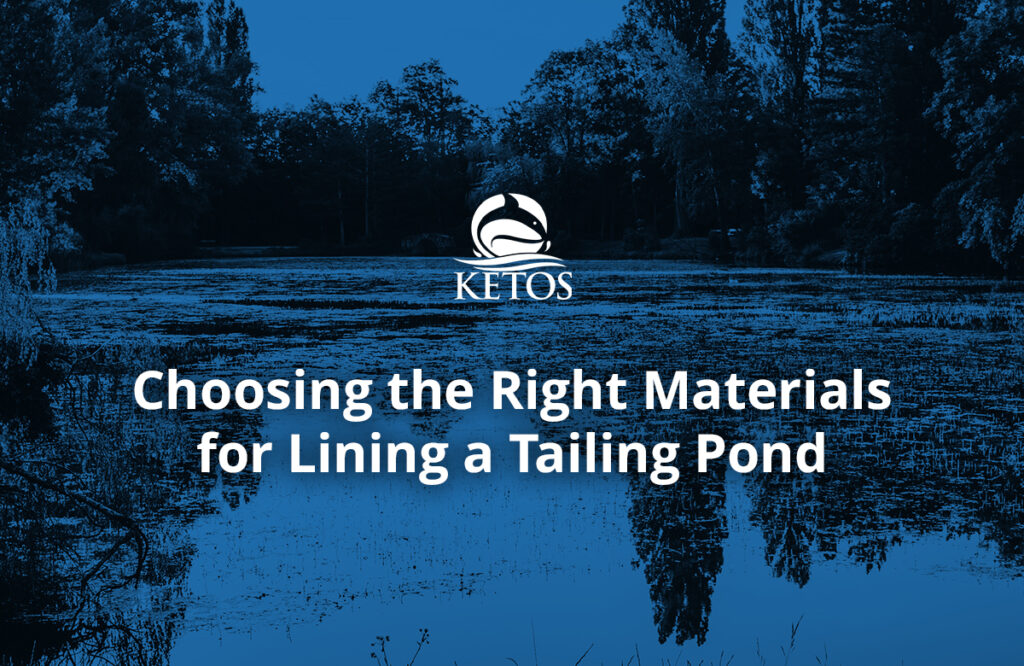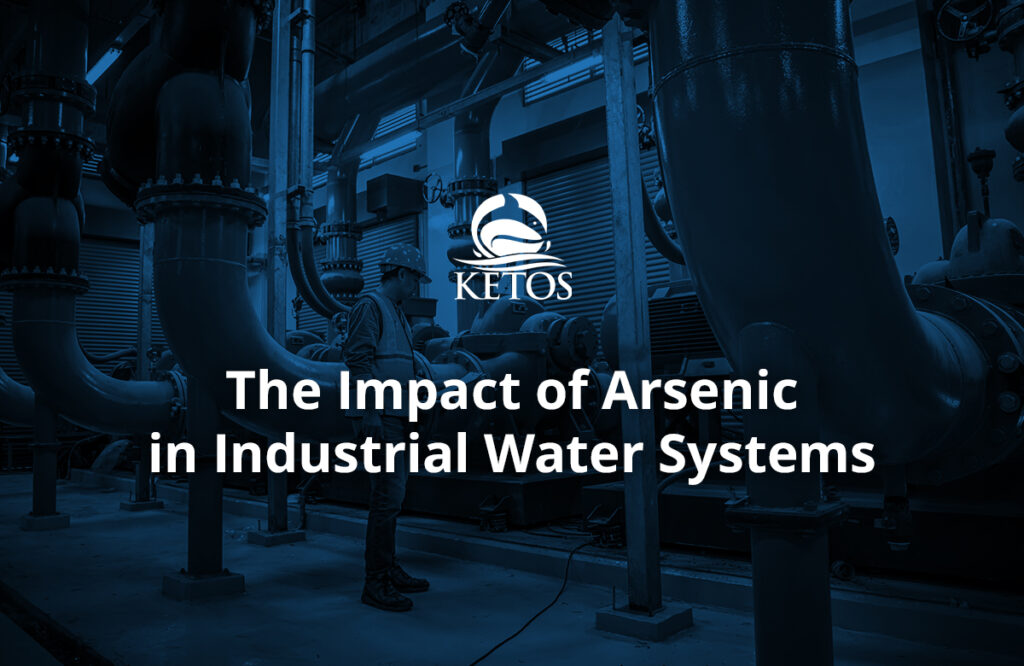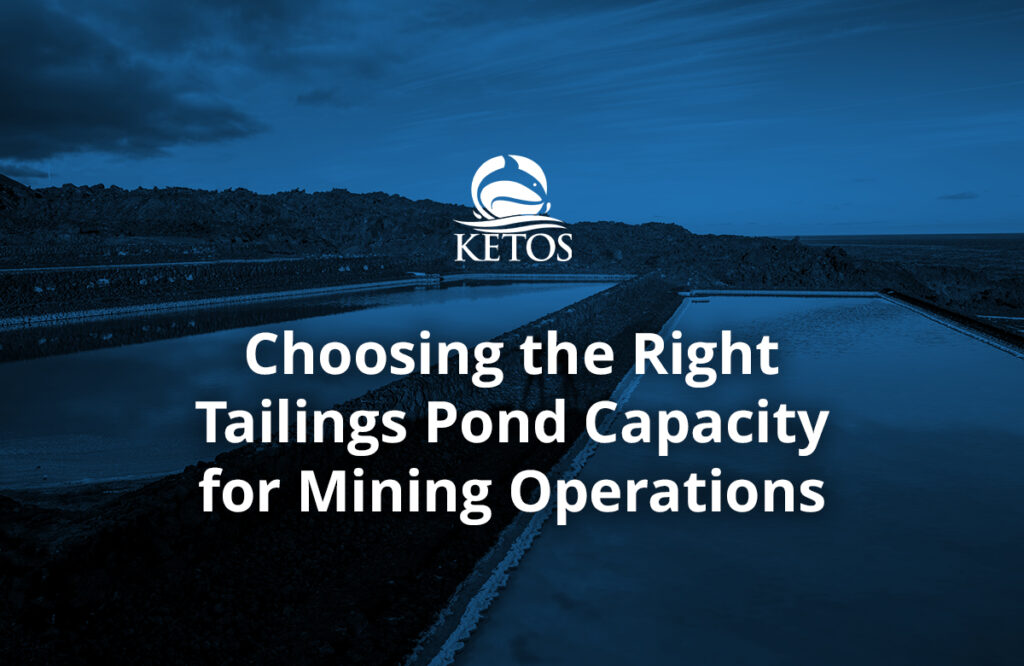American drinking water is among the world’s safest. But, of course, that wasn’t always been the case. And even so, modern challenges and legacy approaches continue to complicate the efficiency of monitoring for and protecting drinking water quality. While the country (via the EPA and CDC) works hard to standardize water quality across the US, there is still infrastructure, for example, that contains lead pipes or areas (like the southwest) that struggle with managing sufficient water levels to meet the needs of local communities.
That said, the country has a long history of working towards protecting communities from contaminated water and continues to evolve as it begins a substantial digital transformation.
The History of Drinking Water Infrastructure and Solutions in America
Routine water quality control has its roots in Jersey City, New Jersey, where, as early as 1908, the city was the first to introduce frequent disinfection applications to drinking water supplies. Following Jersey City’s success at lower communicable diseases, many more communities began to use chlorine to treat water, leading to a substantial decrease in infections.
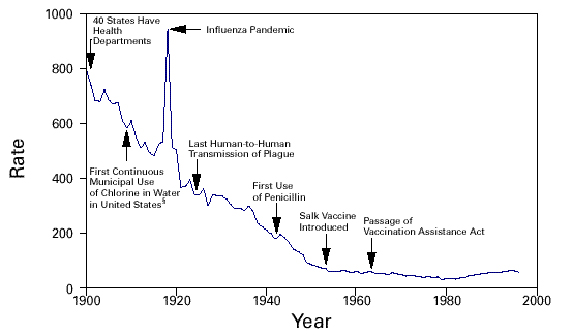
Chlorine, a strong oxidizer, continues to be used heavily in water treatment; however, over time, as science and technology around water quality improved, introducing other types of water treatments into drinking water treatment processes became possible, including using:
- Different types of chlorine (gaseous, sodium hypochlorite, chlorine dioxide)
- Ozone (often followed by chlorination)
- UV (often followed by chlorination)
- Hydrogen peroxide (often followed by chlorination)
- Monochloramine
As technology continues to improve across the water industry, organizations have been able to leverage more effective processes that help better protect drinking water from contamination. These more modern approaches become ever-more precinct as regulations surrounding water usage, remediation, and quality become more stringent – mainly as water supplies continue to become more constrained by long-term drought and changing naturally occurring water lifecycles (affected by climate change).
American Legislation for Better Drinking Water Safety
The Environmental Protection Agency (EPA) was founded in 1970 to fix, create, monitor, and enforce national environmental guidelines. In 1972, the Clean Water Act was enacted to regulate municipal and industrial wastewater discharge while providing grants to build sewage treatment facilities across the country.
In 1974, Congress passed the Safe Drinking Water Act (SDWA) to strengthen water quality regulations. Amendments were added in 1986 and 1996 to protect further drinking water quality. Under this Act, the EPA can set standards for drinking water quality while monitoring state and local authorities and water suppliers tasked with enforcing those standards.
The organization now covers a variety of water-related statutes and regulations, including those related to drinking water.
There are also various other regulations and rules in place to help navigate the complexities of managing water quality. These include:
- The Lead and Copper Rule, which works to limit the concentration of lead and copper allowed in consumers’ drinking water while limiting permissible amounts of pipe corrosion.
- National Primary and Secondary Drinking Water Regulations (NPDWR and NWSWR), standards and guidelines for public health water systems.
- Consumer Confidence Reports
- The Ground Water Rule (applied to public water systems that specifically use groundwater as a public source of drinking water).
- Various state and local regulations.
The SDWA allows individual states to set and enforce their own drinking water standards; however, these standards must be at least as stringent as the EPA’s designated legal limits. Currently, there are limitations placed on 90+ contaminants in drinking water to protect its quality.
Recent Advances in Modern Clean Water Legislation
In recent years, much attention has been paid to America’s aging infrastructure and in 2022, strides were taken to increase infrastructure investment, including in clean drinking water. Under the bipartisan Infrastructure Investment and Jobs Act, $55 billion is being allocated directly to clean drinking water. This includes funding for lead pipe replacement and new water infrastructure for Tribal Nations and various disadvantaged communities across the nation.
Much attention is also currently on the American west, which has faced a years-long drought. For example, to help alleviate stress on the region, the Department of the Interior is investing $36.1 million (including $26.7 million via infrastructure funding) to help protect local drought-affected water supplies.
Recent updates and calls for revisions to specific regulations have also been made, including The Lead and Copper Rule and PFAS.
Drinking Water Quality and Innovations in Water Infrastructure
While the United States still struggles with removing lead pipes, and aging water infrastructure continues to be a challenge in both small and large communities, innovations in the water industry are making it much easier to understand water quality and act upon real-time data to protect communities.
Technological advances in automation and IoT have made it possible for water operators to automate processes and add sensors to their existing infrastructure to better monitor for leaks or equipment failures. An added layer of AI and machine learning is now also possible. This will facilitate predictive and prescriptive approaches to water quality. For example, utilities with AI will better understand when equipment needs maintenance, when chemical rebalancing needs to occur, and when high or low use is likely. These insights can help reduce costs and encourage new approaches to lowering usage for better water conservation.
KETOS: Making Accurate Water Quality Monitoring Attainable and Affordable
KETOS continues to be at the forefront of water quality monitoring and is approaching water quality monitoring by working to address modern water quality challenges.
Reducing Sampling Costs
One significant challenge remains the cost (in both labor and third-party lab analysis) of water quality testing. Samples need to be manually pulled and sent out of organizations for analysis. The data returned can sometimes come days or weeks after the sample submission, making it difficult to react in efficient timeframes.
Works Within Any Budget
Another challenge is the general concern over budgets and costs when adding new additions to existing infrastructure. Many water utilities have constrained budgets and struggle to maintain the technology and infrastructure they have. This is why KETOS has approached water quality monitoring through the lens of SaaS. Companies pay one set, monthly fee (instead of a high upfront cost) and immediately benefit from real-time monitoring across 30+ parameters, effectively covering an organization’s entire water monitoring parameters with one device.
Interoperable and Modular Design
KETOS has the added benefit of being interoperable and modular. Devices can be placed within existing systems without re-imagining processes and at any strategic point within the utility (influent, effluent, etc.). As an interoperable device, KETOS can communicate with other devices (such as SCADA and HACH devices) and pull data to one central repository so that all information about water, including usage and quality, exists in one place.
By lowering the barriers to entry and ensuring that KETOS remains affordable (with real-time sampling costing pennies on the dollar compared to traditional testing methods), KETOS is perfect for cost-conscious water operators while offering easy access to the latest information so that organizations with even the smallest budgets can benefit from the power of digital transformation.
